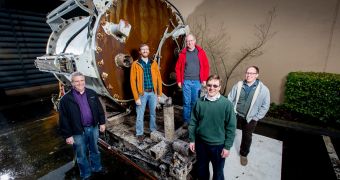Microsoft has just announced a new innovative initiative called Project Natick, whose main purpose is to allow the company to build data centers in the ocean (as in underwater).
The Redmond-based firm says that building a capsule that could host servers and hardware benefits both the consumers and the company itself as it can help deliver services faster than before while at the same time keeping costs very low and offering rapid provisioning.
Microsoft says that it has already started the research project with a prototype data center called Leona Philpot (as the Halo character), which was installed on the seafloor approximately one kilometer off the Pacific coast of the United States and worked from August to November of 2015.
While for Microsoft installing an underwater data center is clearly a pretty good business because of the reduced costs, what are the customer benefits that Project Natick actually brings?
Redmond explains:
“Latency is how long it takes data to travel between its source and destination. Half of the world’s population lives within 200 km of the ocean so placing datacenters offshore increases the proximity of the datacenter to the population dramatically reducing latency and providing better responsiveness.”
Not damaging to the environment
But isn’t an underwater capsule destroying the environment? Not at all, says Microsoft, and the experiment that it ran last year was specifically focused on determining the damages that such an underwater building could cause to the fauna.
“With the end of Moore’s Law, the cadence at which servers are refreshed with new and improved hardware in the datacenter is likely to slow significantly. We see this as an opportunity to field long-lived, resilient datacenters that operate ‘lights out’ - nobody on site - with very high reliability for the entire life of the deployment, possibly as long as 10 years,” Redmond says.
Additionally, all data centers are fully recyclable and generate zero emission, without using water for cooling or other purposes.

 14 DAY TRIAL //
14 DAY TRIAL //